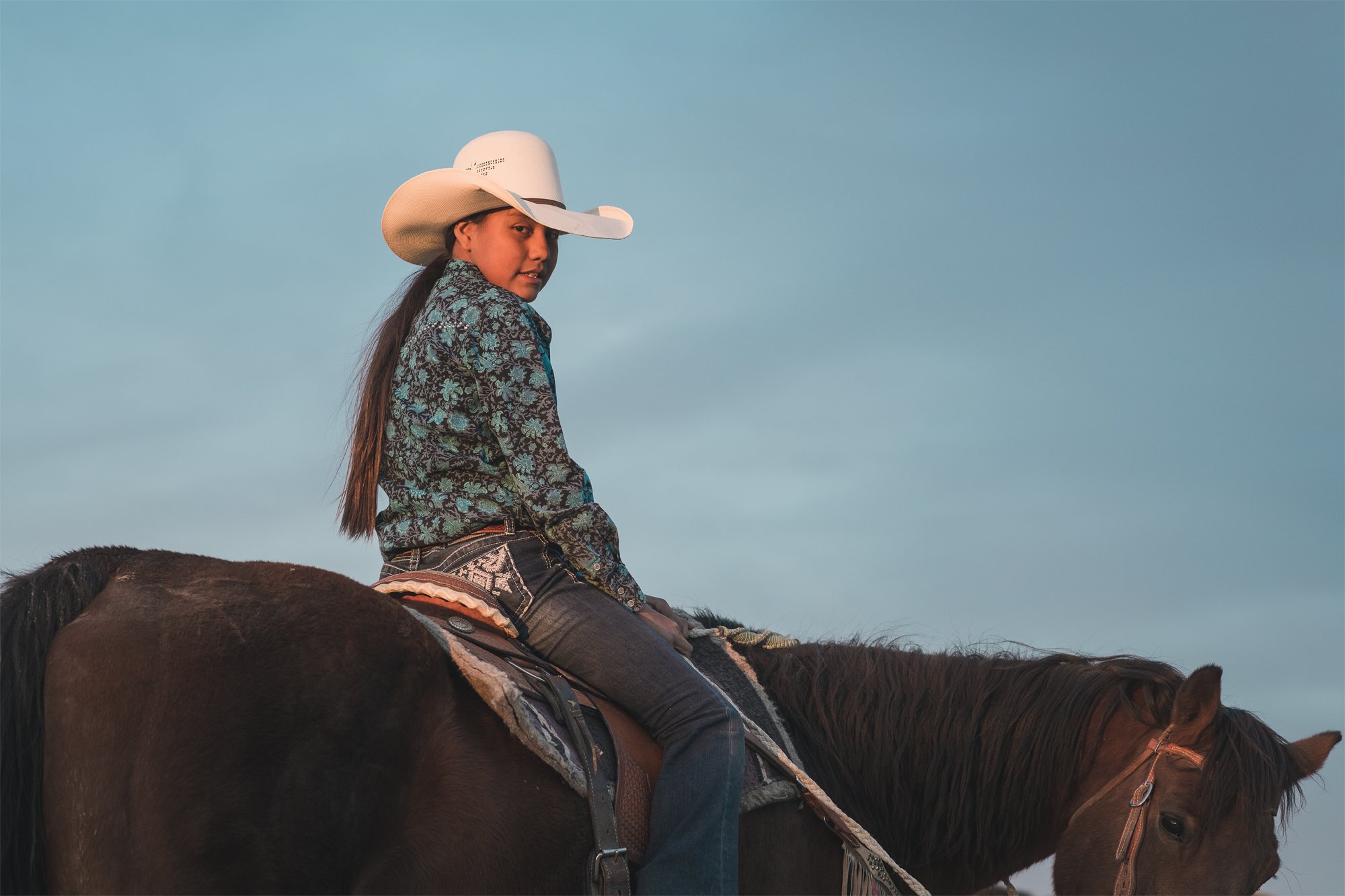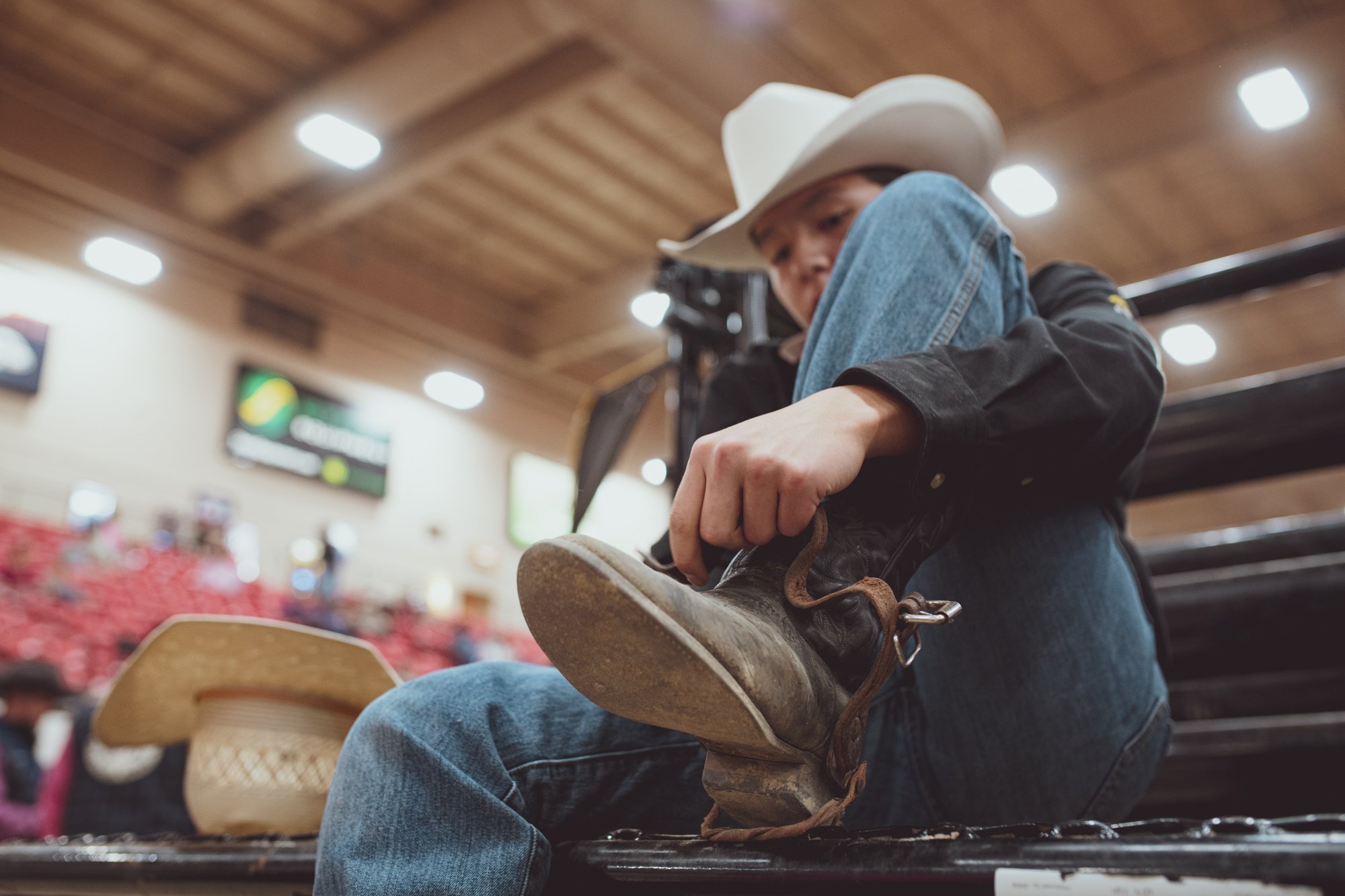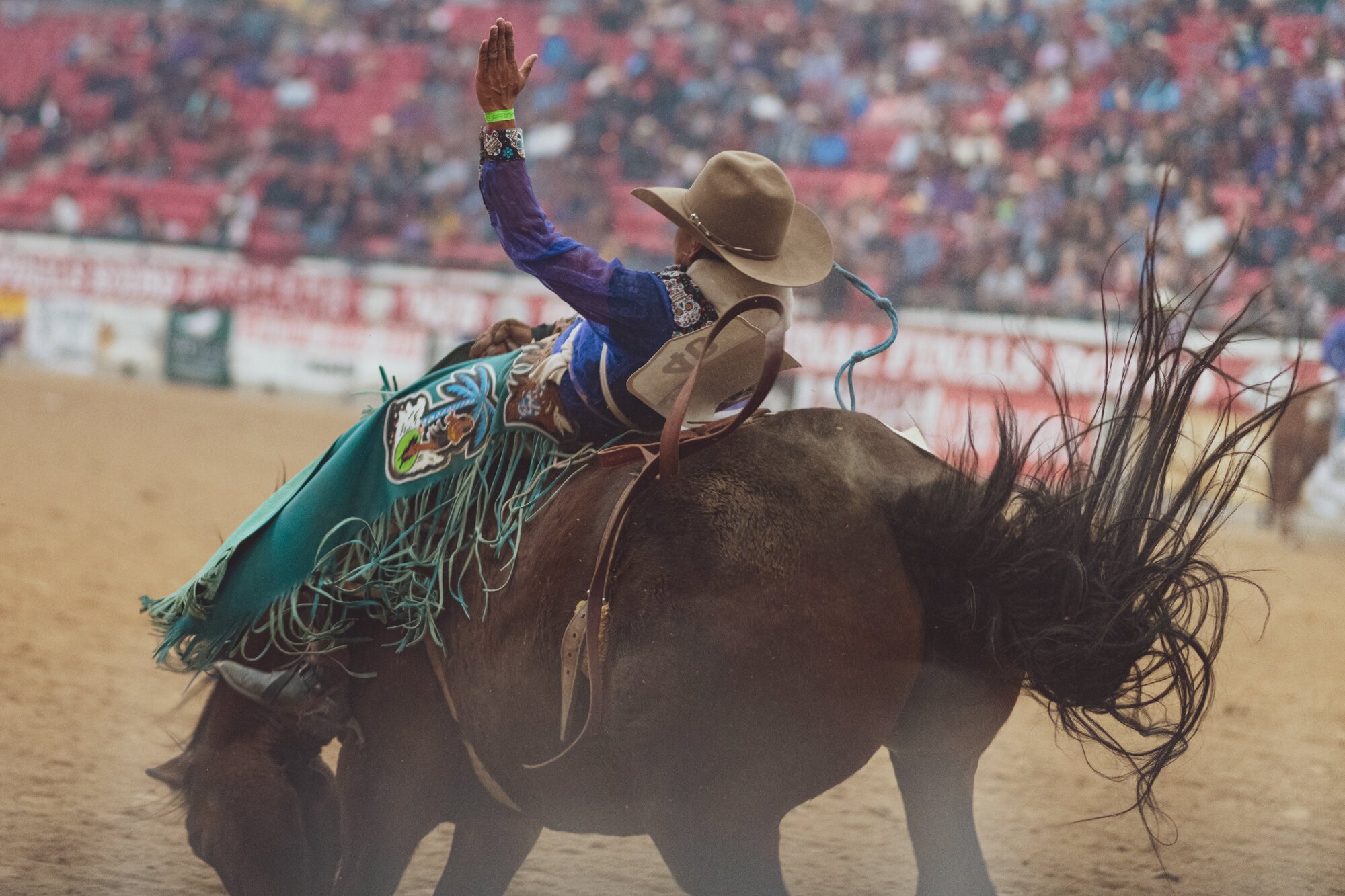Arizona. Utah. Nevada.
This is our country. This is rodeo country. This is America.
The Southwestern States of America are tough, sunburned and weather beaten. Here rodeo is not just entertainment, it’s an essential part of life. From an early age, Native boys and girls learn the skills needed to work the ranches that are the region’s economic life blood. Rodeo has come to mean many things to the Hopi, Hualapai and Navajo who live here. To them, rodeo is community, shared history, celebration and survival.
With filmmaker Doug Hancock. Text by Prue Duggan.
Shown at the Vaqueros Legacies exhibition at Booth Western Art Museum, Georgia.

Tuni boys - Navajo Nation
“There’s me and my little brother in my family right now. When I did something wrong, my folks were there to help me correct myself. I know there’s a bunch of kids down there, that I know they could do it…”
- Troy Tuni, bullrider
The Tuni family ranch isn’t easy to find, and it’s even harder to reach; technology cannot keep pace with the stretch of these plains, the endlessness of this sky.
A serious young man, but quick to smile, Troy Tuni was descended from a long line of Navajo cowboys and bull riders. Rodeo was in his blood, and he wanted more Native youths to feel the thrill of riding roughstock on the Indian National circuit and beyond.
Troy took his own life in 2020 at the age of 21. His little brother, Wade, now represents the Tuni name at rodeos.












Crook ranch - Hualapai Nation
“When you ask an animal to give to you, once they show that they’ve actually given, done whatever you’re asking them to do, you release them from the pressure. That’s give and release.”
- Winkie Crook, rancher
Rancher, teacher and community organizer Winkie Crook has a way with horses and children. He’s been teaching rodeo for over a decade. Many of Winkie’s students have gone on to run their own small holdings. Using the skills and patience they learned at his hand. There’s no age limit at Winkie’s school; you’re never too young to be taught or too old to learn.














Ty Silas - Hopi Nation
“No matter what he does, Ty’s going to be a successful person in my eyes. Who knows, it might just help him through all of life.”
- Chris Silas, rancher and tour guide
Ty Silas - Hopi Nation
Ty, 4, is already competing in roping competitions. From a distance, the boy is dwarfed by the horse but he’s not afraid; his father walks beside him. The easy bond between Chris and Ty is undeniable. As is Ty’s prodigious skill. He is relaxed in the soft purple of twilight; a small but composed silhouette, the rope looping gracefully over his head. Once. Twice. Readied, he releases it to the air.










Tribal gathering in Las Vegas
“Our mission is to provide, promote, and preserve the advancement of professional Indian rodeo by empowering families, youth and communities through positive role-models, education, competition, culture, and tradition.”
– Indian National Finals Rodeo Mission Statement
In the past, public displays of Native culture were forbidden, and rodeo became a way to express that.
Founded in 1976, the Indian National Finals Rodeo (INFR), sanctions almost 700 rodeos a year, giving competitors the chance to win over one million dollars, and the chance to be crowned world champion.
The INFR unites tribes from all over North America.





















